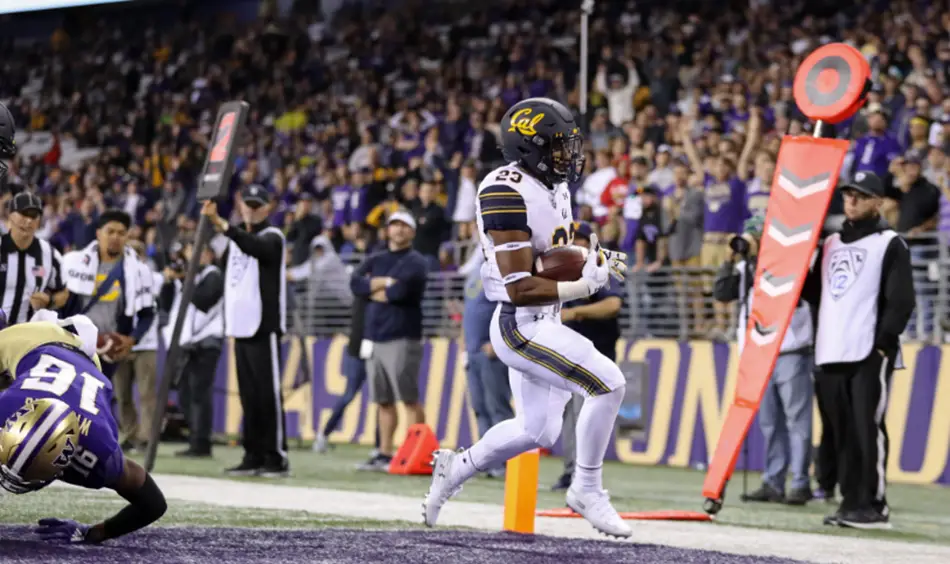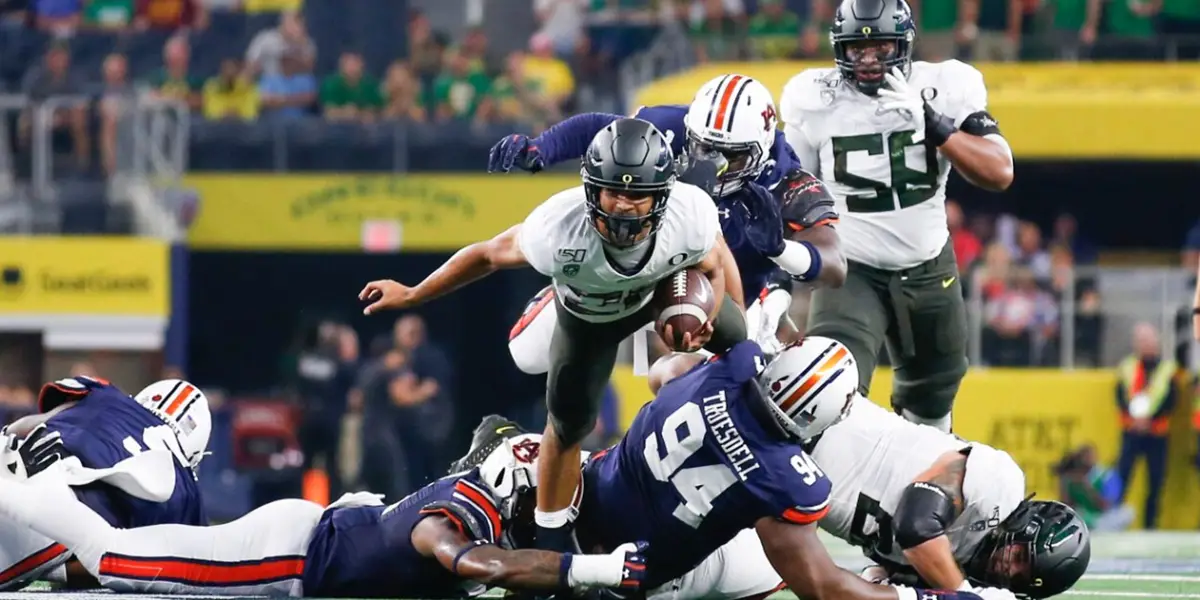Oregon’s week 3 matchup with Montana offers little suspense. Montana is a talented FCS team that ranks 20th in the STATS FCS Poll. But let’s be honest; if the Ducks don’t win by more than 40 points, there will be outrage on message boards across the Northwest.
Since today’s game gives the coaching staff an opportunity to focus on the fundamentals, test new plays and build depth, there probably won’t be many substantial takeaways from the likely blowout. But as the Ducks gear up for conference play, there is one big development to keep an eye on.
There may be a reason Oregon had such a picture-perfect blowout of Nevada last week, beyond the typical case of a powerhouse program beating up on an overmatched foe: Oregon may be benefiting from something we’ll call the “Auburn Effect.” Its ramifications could pay dividends for the Ducks moving forward.
What Is the “Auburn Effect”?
By now, we’ve all (hopefully) recovered from the devastation of Oregon squandering a 21-6 second-half lead against the Tigers. Oregon controlled much of the game, and if just one or two plays had gone differently, Mario Cristobal would have had his biggest win to date. But Auburn won, and now the Ducks are on the outside looking in when it comes to the playoff conversation.

The Ducks made too many mistakes in critical situations against Auburn.
In hindsight, it would’ve been better if the Ducks had just scheduled some scrub in week 1, like they did last season, so that they could have been undefeated heading into a critical game against Stanford next week. Right? Not exactly.
Although Oregon blew the Auburn game, the simple fact that the Ducks played the Tigers — in week 1 no less — may have been the best thing to happen to Cristobal’s squad. Auburn is the most talented team that Oregon will face all season, and it’s the most talented team that Oregon has yet faced under Cristobal. Yes, true freshman quarterback Bo Nix was green, and the Ducks have faced individual players over the past few years who were better than those on the Tigers. But as a whole, no team that Oregon has played in the past three seasons has had a higher blue-chip ratio (the percentage of players on a roster that were four- or five-star recruits) than the 2019 Auburn Tigers.
Being exposed to championship-level talent, especially early on, could very well make the rest of Oregon’s schedule a relative breeze. Washington and USC are the only Pac-12 programs that have a blue-chip ratio above 50% (50% is the unofficial benchmark for winning a national title). However, the Huskies’ inexperience has already bitten them in the butt, as they fell to Cal for the second straight season in week 2. And USC — while possessing an even higher blue-chip ratio than the Tigers — is still led by a less-than-adequate head coach, and has failed to develop its blue-chip talent since Pete Carroll left the program. Auburn is superior to both the Huskies and the Trojans. The rest of the Pac-12 doesn’t even come close.

Cal upset Washington once again.
Think about it. Even in Oregon’s best years, very rarely did the Ducks put together a performance quite as utterly dominant and complete as their week 2 win against the Wolf Pack. And it’s not as if Nevada is a doormat. In fact, the Wolf Pack had just beaten a Purdue team that qualified for a bowl in 2018. No one’s confusing Nevada for Alabama, but it isn’t Stephen F. Austin, either.
Not only did Oregon score 77 points effortlessly, but its defense was impenetrable, and it forced turnovers left and right. Regardless of who the opponent is, a 71-point win turns heads.
Of course, with dramatically improved recruiting and potential improvement on the coaching front, it’s possible that the Ducks have simply improved from last season to this year, and we witnessed the result last Saturday. But if Oregon improved that drastically, why did the same team that played a practically flawless game against Nevada look so inept in the second half against Auburn? In fact, week 1 Oregon looked pretty similar to the 2018 version, which scrapped together a mere seven points in the RedBox Bowl against a similarly formidable Michigan State defense. Week 2 Oregon looked like a super-sized version of Chip Kelly’s Ducks.

Oregon was unstoppable against Nevada.
So, what changed? For one thing, Nevada is on a different competition level than Auburn. Nevada isn’t an FCS school, but the Wolf Pack probably seemed like one when compared to an Auburn team full of future NFL players. Oregon was thrust into the spotlight following eight months without competitive action, and its first game was against one of the most talented teams in the country. It’s all downhill from there.
While we may not be able to gauge a whole lot from Oregon’s game against Montana, keep an eye on the ramifications of the “Auburn Effect.” Will there be less rust than usual against these early season opponents since the Ducks were thrown into a heavyweight matchup from the gate? Or was Oregon’s victory against Nevada just a perfect-storm scenario that shouldn’t be the expectation moving forward?
Let’s talk football before, during and after Oregon’s game against Montana tonight. Do the Ducks somehow improve upon their performance from last week, or do they come back to earth just a bit?
Joshua Whitted
Morgantown, West VirginiaTop Photo by Melissa Macatee
 Bob Rodes, the FishDuck.com Volunteer editor for this article, is an IT analyst, software developer and amateur classical pianist in Manchester, Tennessee.
Bob Rodes, the FishDuck.com Volunteer editor for this article, is an IT analyst, software developer and amateur classical pianist in Manchester, Tennessee.
Related Articles:
Oregon Enters Playoffs Better Off Than Last Year
Will The Coaching Carousel Kill Oregon's CFP Chances?
The Playoff Formula Hasn't Changed
Oregon Aims to Bury Dawgs, Punch Playoff Ticket in Rivalry Clash
Huskies Are the New Beavers, Stay In Your Lane Kiffin, and the Civil Apple Cup War
Oregon Football: The X-Factor Vs. Washington
Joshua is an adopted Duck fanatic, originally hailing from southwestern Pennsylvania. His love for the University of Oregon began as a young child when he became mesmerized by the flashy uniforms and explosive offenses of the Chip Kelly era, and now, he follows the team religiously. His fondest memory of the team is seeing De’Anthony Thomas race past Wisconsin defenders back in the 2012 Rose Bowl. A true football enthusiast, Joshua loves studying the intricacies of the game, and he aspires to become a professional sports journalist. Joshua now resides in Morgantown, West Virginia where he works in customer service. When he’s not watching Oregon replays, Joshua loves reading, writing, and spending time with his family. Contact: whittedjd@gmail.com

